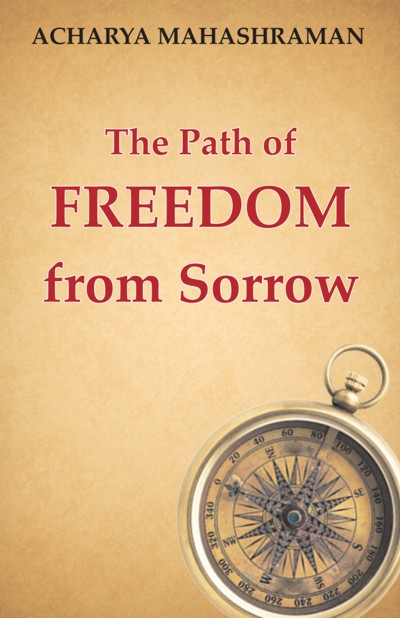Avery curious Disciple asked a question to his guru, "O lord! How can salvation be attained? Does wearing white attire bring liberation? Can a person attain moksha (salvation) by following Digambar traditions? Can a person through intellectual understanding of logic or ontology bring salvation?" In replying to the disciple's question Acharya (guru) said,
Shwetambaratve na digambaratve, na ŧarkvade na cha ŧattvavade Na pakshapatashrayanen muktih, kashayamuktih kil muktireva
i.e. My son! Attaining moksha is not possible by simply being Shwetambar or Digambar, neither through intellectually understanding logic nor through ontology. Moreover, the shelter of any tradition can also not help attaining liberation. In fact, freedom from kashay (passion) is the true liberation.
As a matter of fact, intense passion distorts the consciousness. There are three kinds of karma - obscuring, distorting, and hindering. Gyanavarniya (knowledge-obscuring) and
Darshnavarniya (intuition obscuring) are obscuring karma. Their function is to obscure the true nature of the soul. Rise of these karmas covers knowledge and intuition but do not distort the perception. Vedaniya (feeling determining) karma makes us feel pain and pleasure. Antaraya karma is hindering karma while Mohaniya (deluding) is distorting karma. Anger, ego, deceit, greed, fear, hate and many more are the various branches of Mohaniya karma.
There is constant inflow of Karma. As water flows into a well from a canal, similarly karma enters the soul through ashrav. The soul of man can ascend to moksha or attain liberation by exercising samvar (inhibition of entrance of new karma) and nirjara (eradication of accumulated karma). The more you practice samvar and nirjara, the path of self-purification is enhanced.
The prime hurdle of self-purification is Kashay. Kashay is being defined as
Suhadukkham bahusassam kammakkhittam kasei jivassa Samsargadi meram ten a kasao tti nam vinti
It means that whosoever ploughs the farm of such karma, what produces the harvest of pain and pleasure like anger and many more for the living being and which takes the being to four realms of life, is kashay. A person with kashay transmigrates in four worldly domains only. To arrive at the fifth domain (liberation) a spiritual practitioner needs to develop the state free from kashay and attachment. He should move towards the state of veetragata - beyond the impulses of attachment and aversion. The craving is higher with higher level of attachment. Conversely, craving is reduced with higher level of detachment. Attachment distorts the consciousness whereas detachment purifies it. Therefore, the practice of dissolving the worldly passions is a must for the purification of consciousness. It means the practice of equanimity is necessary. When the tranquil (upsham) state of karma is effective, then the feelings of attachment and aversion for pleasures and pain respectively do not exist. In this state, likes for happiness and dislikes for miseries do not exist. Consequently, the consciousness does not get distorted in both the situations pain and pleasure.
Lord Ram was neither extremely excited when king Dashrath announced his coronation nor he was disheartened when he was sent to jungle. When the state of equanimity and veetaragta matures then everlasting bliss emerges. We are endowed with eternal treasure of infinite knowledge, infinite intuition, infinite bliss and infinite power.
Once, a milkman went to a businessman with a shining stone. After examining the stone the businessman told the milkman to take as much of the wealth from his treasure as he wanted. The entire community was laughing at him and they would say, 'how foolish he is! He gave his entire treasure to the milkman to purchase a simple stone'. The businessman did not respond.
On the day of Sharad poornima (the full moon day in ashwin month of Hindi calendar), he invited the entire community of the village to his home. At midnight he put that radiant stone in a gold plate. As soon as the moon light fell upon the stone, diamonds began to appear! People were overwhelmed by just looking at it.
Disclosing the secret of the stone the man said that it was not a common stone but the gem Chandrakant. Every year in this very month, on same night and at the same time it has the potentiality to "sprout" diamonds. A gem like Chandrakant gem is not only in the external world but it is in our inner world as well.
We just need to evaluate the value of that gem, and to recognize its strength. Our inner world is full of treasures. The treasure includes the pair of anger and forgiveness, ego and humbleness, deceit and rectitude, greed and contentment as well. The successful efforts of defeating anger, ego, deceit and greed and projecting the attitudes of forgiveness, humbleness, straightness and contentment can lead to successful austerity.
 Acharya Mahashraman
Acharya Mahashraman
